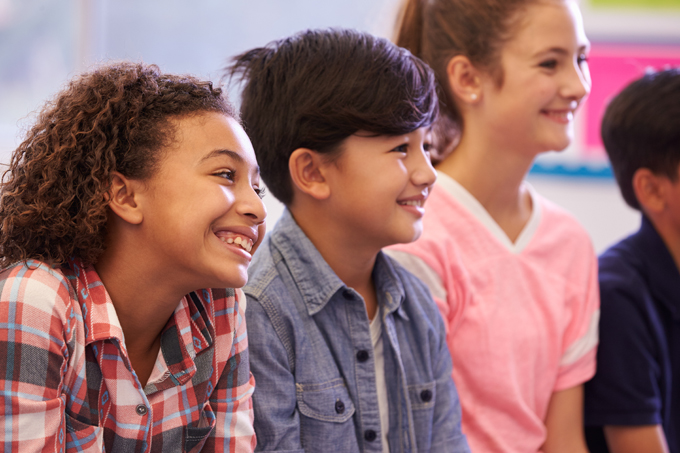 Making sense of today’s complex media sources has been the topic of many blog posts on Literacy Daily and is addressed in the National Association for Media Literacy Education's list of core principles of media literacy education. Thoughtful scholars and educators have emphasized the need to include media in the classroom, to learn to critically evaluate complex representations and engage civic media literacy practices in a post-truth society, and to consider the range of questions we might pose to scaffold student understanding and sensemaking about digital texts and media.
Making sense of today’s complex media sources has been the topic of many blog posts on Literacy Daily and is addressed in the National Association for Media Literacy Education's list of core principles of media literacy education. Thoughtful scholars and educators have emphasized the need to include media in the classroom, to learn to critically evaluate complex representations and engage civic media literacy practices in a post-truth society, and to consider the range of questions we might pose to scaffold student understanding and sensemaking about digital texts and media.
Less often addressed, however, is the immediacy of a maelstrom of media reporting about complicated news that might directly deal with violence, politics, and inequities. In fact, a new genre of media and online text might be understood as “disaster media,” or media produced in response to intense global disasters (man-made or natural).
While doing research in a small town in the rural Midwest, I worked alongside elementary teachers who joined Global Read Aloud in the fall of 2015. Classes around the world read books and participated in social media and video conversations with other classes. In fall 2015, one of the books, Fish by L.S. Matthews (Yearling), dealt with migration caused by war and climate change. That fall also saw intense and pervasive media reporting about refugee migration from northern Africa to the shores of southern Europe. Media stories shared gruesome details about the trek people took across the Mediterranean; the uneven, and at times violent, welcomes received in Europe; and the extraordinary loss of life by people, including many children, making this journey.
It was impossible to avoid this media as we read a book about migration with fourth- and fifth-grade students. As one teacher put it, “no one could have planned for the events going on in the news.” Together, I worked with other teachers and students to collect and share numerous news reports about this global disaster. We discussed the news, explored historical migration and refugee experience, defined key terms, and continued to read children’s literature. In addition, we spoke with classrooms around the world about their reactions to the book Fish and to the horrific images and events being reported. Across these conversations, every child expressed a strong desire to help the individuals seeking safety. One classroom in Chicago, Illinois, described sponsoring refugee families in their city. Another classroom in Buenos Aires, Argentina, described examining the political response to welcoming refugees to their country.
In the small town in which I worked, students did not have access to refugee services to sponsor a family in town. Their community is very politically conservative, and teachers were wary of diving straight into politics. Instead, together we devised a series of questions for students to critically interrogate just how to help refugees. We did this by identifying texts that might come up in a typical Google search. For example, recent sources about supporting or helping refugees include a listicle from TED (the popular lecture video series) and the UN Refugee Agency's guide. We used an online reading platform to allow students the time to examine a series of these online texts in pairs, using the following research-supported questions to scaffold textual critique and reader reflexivity.
- Who created this source?
- Why was this source created?
- What story does this tell us about refugees?
- What does this source want you to feel, think, or do?
- What ideas does this source give you to help refugees?
- What would you need to help the refugees based on this source's ideas?
- Would these ideas be possible for you (and your classmates or family or community) to do? Why or why not?
Students came away from these discussions with concrete next steps that matched their local experiences and context. Teachers and I hoped these critical media literacy practices would support thoughtful ways of taking action. After brainstorming, discussion, and planning, students lead several actions. They created a letter about the need to support refugees and were then given time to read their letter at a local school board meeting. They started a fundraiser for a nonprofit organization selected from their critical reading and donated money they had raised. They led read alouds on migrant and refugee experiences in lower grades classrooms at their school. The students, and their efforts, were, frankly, remarkable.
As a result, teachers and I learned that the media of the moment, often media that is not deemed appropriate for children, cannot be avoided in any classroom—regardless of the age of its students or the content or the local context of education. We now recognize the need to integrate media thoughtfully, to look for opportunities to support critical media literacy, and to allow students the time and space to act on their desires for a more just future world.
Alexandra Panos is an assistant professor of elementary literacy at the University of Nebraska at Omaha. Her research focuses on the literacies needed to address complex spatial and environmental challenges. She seeks, along with the children she writes about in this blog post, a multitude of ways to contribute to a more just future world.
This article is part of a series from the International Literacy Association’s Technology in Literacy Education Special Interest Group (TILE-SIG).